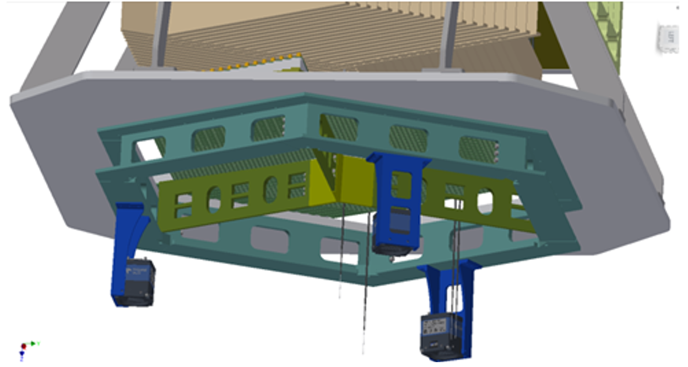Acquisition and Guide Camera design study
As a spectroscopic survey facility, we strive to maximize the focal surface area for science observation. MSE being a prime focus instrument, the focal surface at the telescope top end is shared between the positioner system with 4,332 tilting spines, each carrying a spectrograph input fiber, and the Acquisition and Guide Camera (AGC) system during observation. Using fiducials on the positioners and AGC cameras, the positioners’ metrology system verifies the correct spine input fibers’ sky positions with respect to the guide stars as seen by the AGC cameras.
Led by Peter Gillingham with analyses from Derrick Salmon, the AGC system design study uses three off-axis cameras while meeting the conceptual-level design requirements. The AGC system utilizes commercial CMOS camera technology to provide the sufficient sensitivity for the guide star centroid accuracy required for telescope guiding under realistic conditions including Maunakea seeing, exposure time and system noise sources. The size of the CMOS camera is suitably small and does not vignette the science field yet its detector size is large enough to acquire guide stars in all three cameras concurrently within sparse fields near the North Galactic Pole, even exceeding the limiting magnitude identified for acquisition and guiding. In addition to centroid error and sparse field analyses, Derrick also verified the effectiveness of the AGC system while observing in a crowded field using SDSS data representative of the Galactic Plane.





